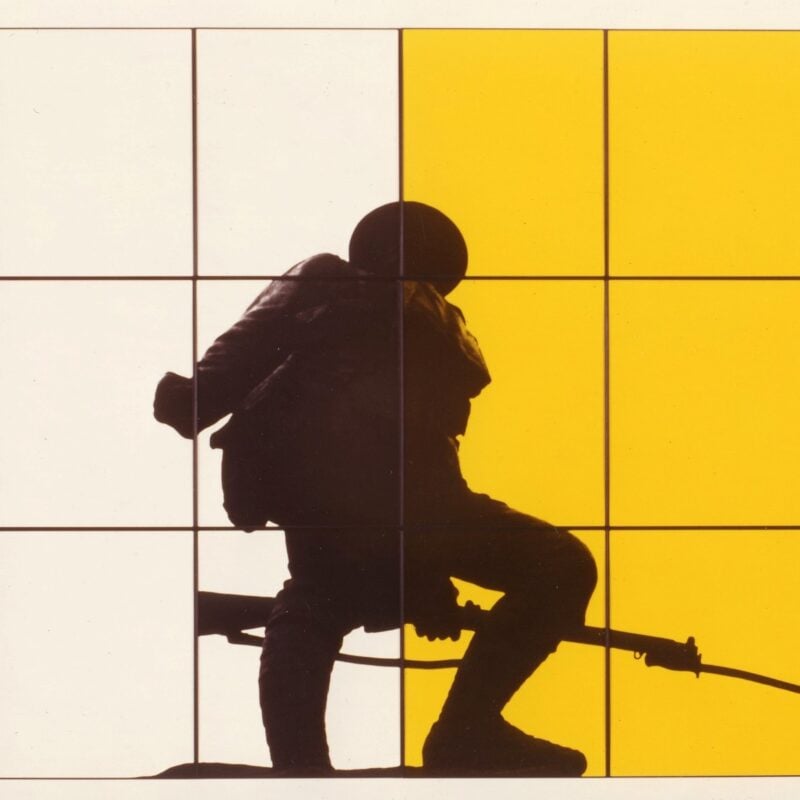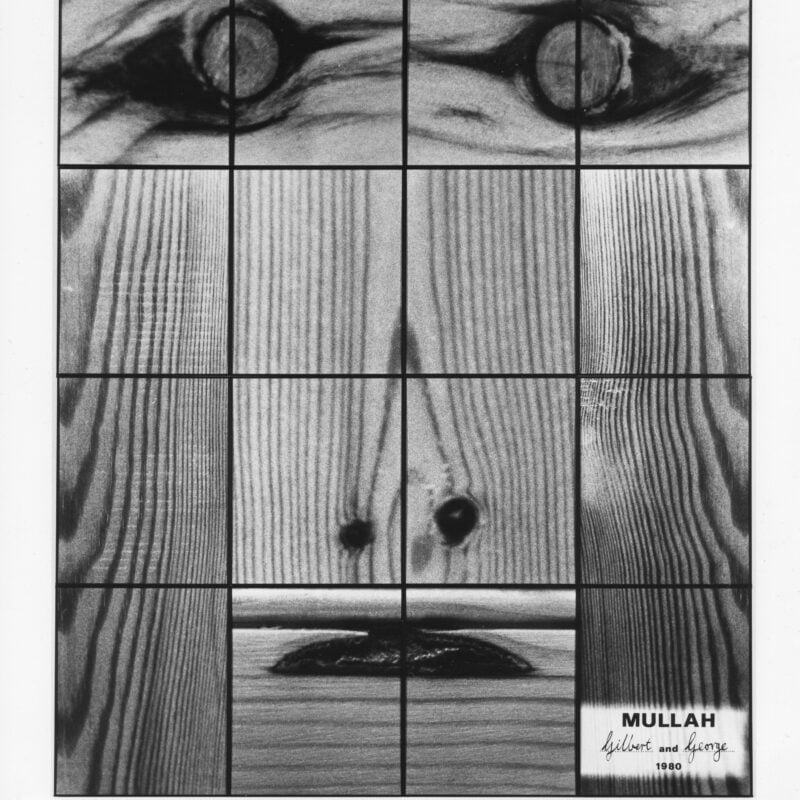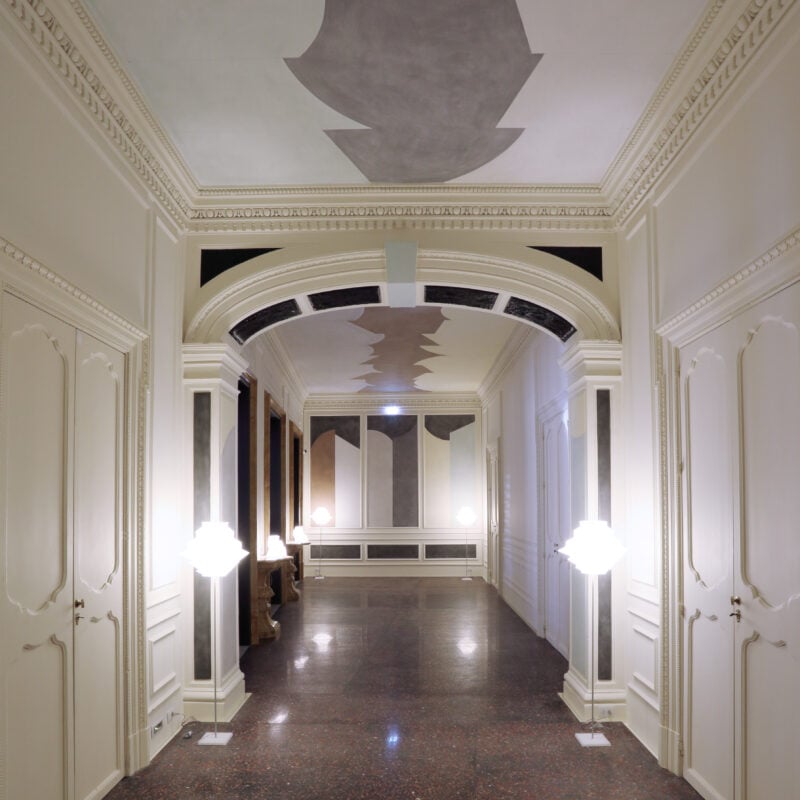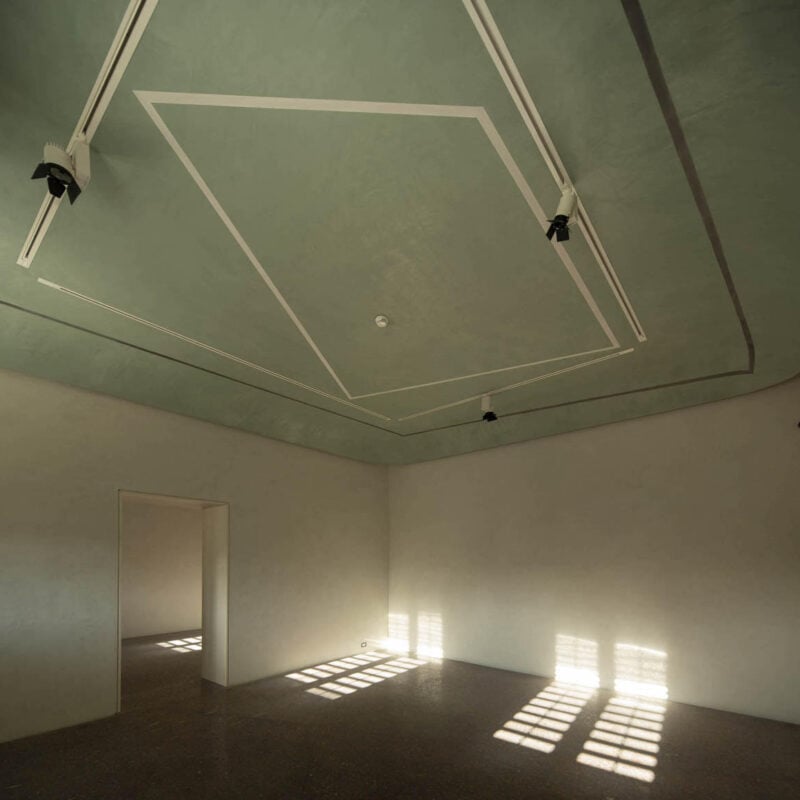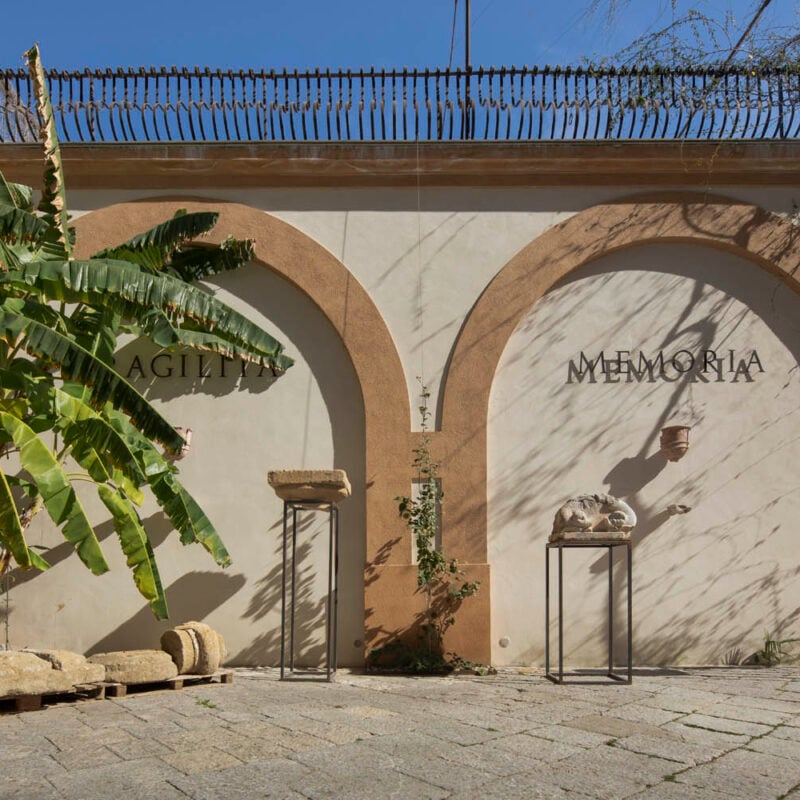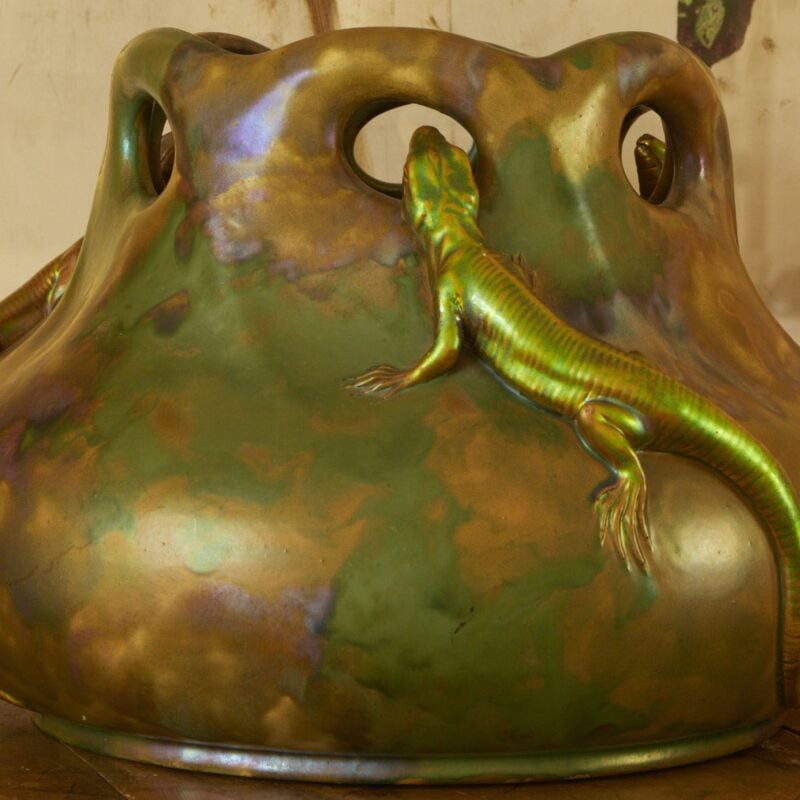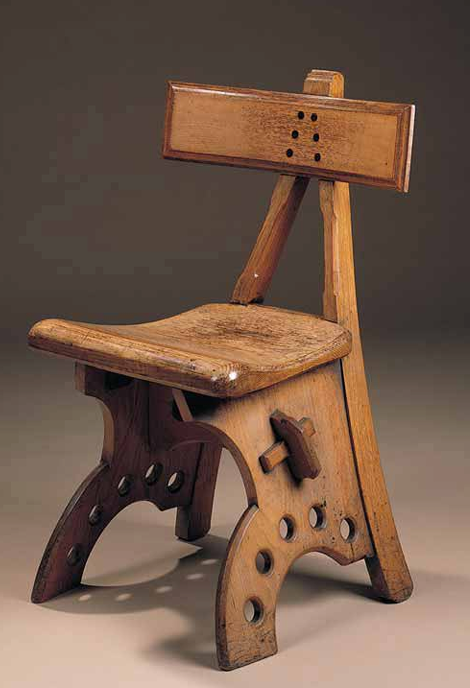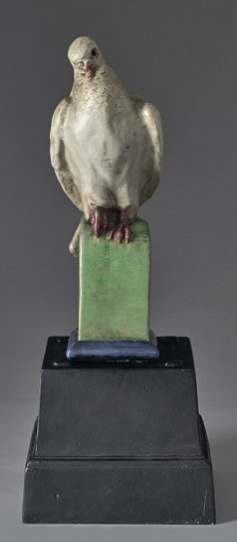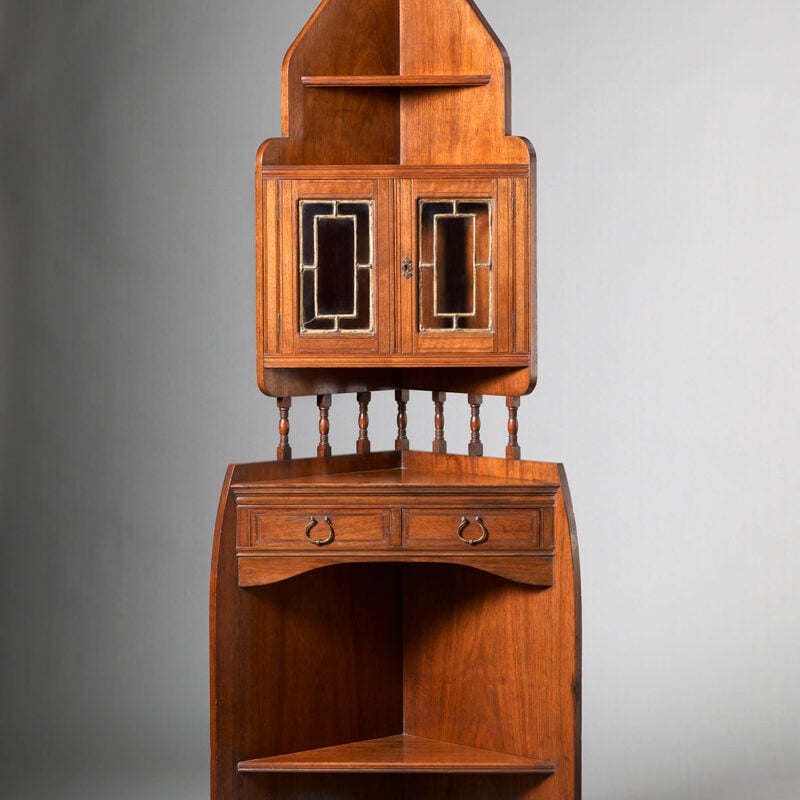IN DETAIL
Dimensions
86.4 x 67.3 cm
Technique
Oil on canvas
Descrizione
Tom Phillips provided the following information about this work:
This picture is
This picture is loosely based on a small black and white reproduction of a painting attributed (equally loosely I think) to Signorelli. This features the poet seen through the window of an otherwise windowless and featureless room. I have departed from this source in almost all respects and have introduced a back window which looks out onto a quasi-metaphysical landscape which includes a rocky outcrop, (derived from a nude photograph in an erotic magazine called In Depth) in front of which stands a cypress tree, a traditional reference to death but here in form and position relating also to a phallus. This juxtaposition recalls the idea that any visit to the underworld is a rape of the Mother (Earth), whose hairy entranceway within this landscape is the selva oscura (sombre wood) in which the poet discovers himself at the beginning of his Comedy. Also present, and rising out of the sea is the Mountain of Purgatory, forming, as it were, an ancillary breast to the rocky reclining figure, Purgatory being the place of spiritual nurture.
The books at the right of the picture give a key and colour-index to the image as a whole. They are titled AMOR, MARO and ROMA, each being an anagram of the other. (…)
Dante’s physiognomy is based on the traditional received image of a hatchet-faced ascetic that comes down to us largely by word of mouth via the probably spurious death-mask, the Torrigiano bust in Naples, and the paintings of Raphael and Botticelli. The hands are my own and drawn from life though adapted to the geometrical dictates of the painting.
All the above might be described as the iconographic grid grid of the image and this in turn is kept harmony of two-dimensional relationships by a mathematical grid based on the Golden Section. Every point of junction and origin and the lmits of every feature in the underlying drawing occurs at the confluence of the key lines generated by and derived from such a grid. In an important sense all this is by the way since the presence of such a web of symbolic connections (no more complicated after all than the route from my Peckham studio to the Royal Academy), and the attendant mathematical properties guarantees only the work’s claim to seriousness. A very mawkish and sterile object might comprehend all’ the aspects mentioned above. Only if the picture communicates as a feeling unity is it worth bothering to read all this stuff.
(Tom Phillips, Works and Texts, Londra, Thames and Hudson, 1992, p. 233)

